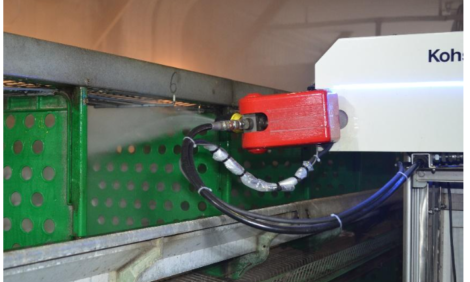



Avian metapneumoviruses are difficult to control
The clinical signs are often mild, but can be exacerbated by secondary bacterial pathogens[Edited version of a presentation by Silke Rautenschlein, DVM, PhD, University of Veterinary Medicine Hannover, Germany, during the 2024 Western Poultry Disease Conference]
While the clinical signs of avian metapneumovirus (AMPV) are often mild and affect only part of the flock, they can be exacerbated by secondary bacterial pathogens, which is then the main trigger for veterinary investigations.
AMPV infections may be difficult to diagnose in the field due to a short detection period in choanal and tracheal swabs depending on the virus strain and host.
The virus seems to be unstable in diagnostic material, which affects the detection rate and the chance for virus isolation, explaining the low number of available laboratory and AMPV vaccine strains.
Various in-house procedures and commercial (q) RT-PCR systems are available to detect the different subtypes in multiplex assays. However, it is possible that newly emerging subtypes may be missed, depending on the design of the RT-PCR reaction.
AMPV subtypes
Different subtypes (A-D) of AMPV have been described in poultry in various regions in the world. Different poultry as well as wild bird species show variable susceptibility to the different subtypes.
New subtypes were suggested recently for viruses detected in gulls and parakeets. AMPV shows a strong tropism for epithelial cells in the trachea and turbinates as well as in the reproductive tract, which leads to respiratory symptoms and reproductive disorders, and subsequently significant economic losses.
While subtype D was detected only retrospectively in samples from the 1980s, subtype A and B still circulate in many regions in the world since their first description at the end of the 1970s.
Different subtype C strains emerged in the United States in the middle of the 1990s and later in Asia and Europe, the latter continuing to spread further.
AMPV control strategies
Depending on the bird’s species and density of the poultry population in a specific region control strategies may vary. In poultry dense regions, biosecurity seems to be less efficient for the control of the virus and therefore, vaccination is additionally implemented.
In regions with fewer poultry flocks and low field pressure, eradication strategies and biosecurity may control AMPV spread.
It is important to understand the circulation of the AMPV viruses in wild bird populations, especially the ones having their habitat in or near farming regions, as they may support virus presence.
AMPV vaccination
So far, only attenuated live vaccines and inactivated vaccines are commercially available to protect against different subtypes, especially for use in laying hens to prevent losses in egg production. The relatively short duration of local immunity after the application of live vaccines may require frequent booster vaccinations, especially in long-living birds.
Cross-protection has been observed between subtype A and B vaccinations. Vaccine usage may drive virus evolution in the field. The reversion of vaccine strains to more virulence has been observed.
New generation vaccines have been tested experimentally. The development of reverse genetics systems for different subtypes of AMPV may allow the design of new candidate vaccines in the future with reduced safety concerns and long-lasting protection, compared to the currently available vaccines.










